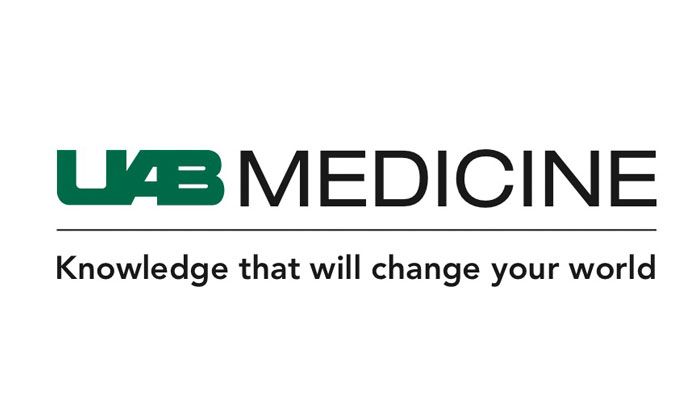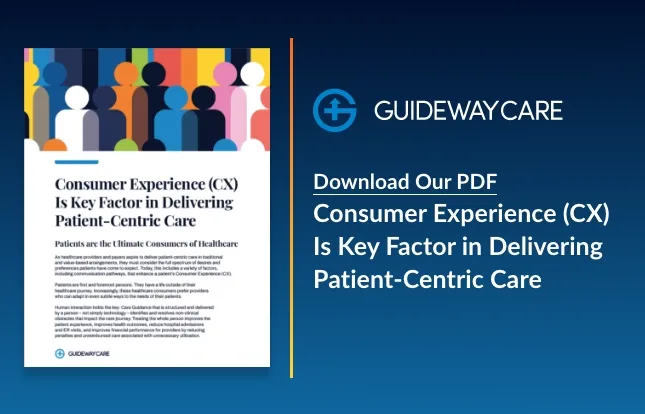UAB Expands Cancer Navigation Program Nationally With Guideway Care

Read this story online and see photo at www.uab.edu/news . The UAB News Studio is available for live or taped interviews with UAB experts.
BIRMINGHAM, Ala. – Every diagnosis of cancer comes with fear, anxiety, even confusion. Patients are faced with crucial decisions and have an urgent need for information they can trust. Most of all, patients need someone to help guide them through the complex challenges and barriers that cancer treatment presents.
The University of Alabama at Birmingham and Guideway Care have announced a partnership to expand the reach of UAB’s proven cancer navigation program, Patient Care Connect, to patients nationally.
The UAB Patient Care Connect program was funded by a $15 million Center for Medicare and Medicaid Innovation grant to help create a national model for improving outcomes while reducing unnecessary health care utilization, as well as decreasing the cost of cancer care.
The national implementation of the program will be led by Guideway Care, which provides knowledgeable cancer care guides, processes and technology to assist cancer patients, especially during the periods in between clinical visits.
“Building on the proven methodology created at UAB, Guideway Care provides patient guidance beyond navigation,” said Craig Parker, CEO of Guideway Care. “Guideway Care arms Care Guides with proven processes, advanced communication protocols and purpose-built patient communication technology to help patients navigate obstacles during a difficult and stressful diagnosis.”
The UAB Patient Care Connect program succeeded locally by using nonclinical resources to resolve barriers patients encounter during their cancer journey. Specific results during UAB’s program implementation include:
55 percent reduction in hospitalizations: Hospitalization rates dropped significantly from 35.8 percent to 16.1 percent in the navigated patient population.
29 percent reduction in ER visits: ER visits decreased from 30.7 percent to 21.8 percent in the navigated patient population.
60 percent reduction in ICU admissions: With ICU admissions, a dramatic reduction occurred from 10 percent to 4 percent in the navigated patient population.
45 percent reduction in overall cost: In terms of Medicare claims, there was a considerable reduction of overall cost in the navigated patient population from $15,091 to $8,269 per patient per quarter, which is a Medicare savings of $6,822 per navigated patient. Cost in the last six months of life decreased from $23,735 to $16,764, a 29 percent reduction per patient for the navigated patient population, in comparison to the non-navigated group that increased from $13,418 to $15,544.
In “Resource Use and Medicare Costs During Lay Navigation for Geriatric Patients With Cancer,” published by JAMA Oncology in January, the UAB team reported that an “estimated potential 10:1 return on investment” of the UAB cancer navigation program “helps make a financial case to organizational leadership for sustainability of navigation programs.”
By pursuing patient engagement outside the traditional model, which focuses on clinic-based care, the “navigators are uniquely positioned to meet the needs of these high-risk patients and help them better use outpatient resources.”
Not only did the program have a remarkable impact on the cost of care as reported in the JAMA Oncology article, the Centers for Medicare and Medicaid Services’ (CMS) independent third-party assessors, the National Institutes for Health-funded NORC at the University of Chicago, found a significant improvement in satisfaction among patients.
“What we know for sure is that our specialized nonclinical navigators (care guides) have a positive effect on our oncology patients and engage them in their health care, which can be increasingly complex,” said Gabrielle Rocque, M.D., medical director of the program and lead author on the study. “The extra layer of support that navigators provide can make a big difference. We have patients who tell us that they never would have made it through their treatment without their navigator.”
The introduction of CMS’ Oncology Care Model, or OCM, is recognition of the importance of programs such as Guideway Care. The OCM aims to provide higher-quality, more highly coordinated oncology care at the same or lower cost. The more than 200 participants in the OCM are required to provide the core functions of patient navigation.
The Guideway Care program meets and exceeds the core functions by surrounding patients with the resources and guidance so desperately needed during their cancer journey. In a recent article published in the March 2017 issue of Health Affairs titled “Innovative Oncology Care Models Improve End-of-Life Quality, Reduce Utilization and Spending,” researchers from both NORC and CMS stated, “Under this model, participating practices are required to redesign themselves to include several aspects of [the Patient Care Connect] program.”
“Bundled payments are coming — transferring risk and financial burden to providers,” said Edward Partridge, M.D., director of the UAB Comprehensive Cancer Center. “It is absolutely necessary to transition from fee-for-service thinking, and prepare our physicians and hospital delivery systems for performance-based payment models.”
“The Guideway Care program positions cancer centers to be on the forefront of this movement while differentiating themselves with an outstanding patient experience.”
About UAB Medicine
UAB Medicine comprises the School of Medicine and the $3 billion UAB Health System that includes all of the University of Alabama at Birmingham’s patient-care activities and 2,300 licensed beds in six hospitals, one of which is UAB Hospital — the third-largest public hospital in the United States, winner of the Women’s Choice award, and one of U.S. News & World Report’s Best Hospitals. UAB is the state of Alabama’s largest single employer and an internationally renowned research university and academic health center; its professional schools and specialty patient-care programs are consistently ranked among the nation’s top 50. UAB is the largest academic medical center in Alabama and one of the top four largest academic medical centers in the United States.
About Patient Care Connect
In 2012, UAB Health System Cancer Community Network received a grant to offer a new cancer care model, employing nonclinical personnel to help patients overcome the barriers they encounter during their cancer journey. UAB and associate sites have each established a team of navigators who will work with their clinical team to provide patient navigation services to eligible beneficiaries. The organization providing these services for UAB under the grant was called Patient Care Connect.
About Guideway Care
Guideway Care guides patients through the challenges of cancer treatment and recovery — providing knowledgeable cancer care guides to improve patient engagement, satisfaction and efficient resource utilization by interacting with patients in between the patients’ visits to clinical settings — the exact gaps when and where obstacles are most likely to occur.
Specialized Cancer Care Guides supported by advanced Cancer Care GPS technology and proven protocols (developed by the UAB Health System Cancer Community Network) deliver personalized attention in a confidential, respectful, compassionate and quality-driven manner that cancer patients so often need but cannot or do not receive. Unlike traditional disease navigation, we expand critical communications, interactions and guidance for patients to cover the gaps between clinical interactions.
Patients experience less stress, higher quality of life, better quality of care and supportive, high-value communication. Health systems add seamless and more comprehensive patient interaction, filling gaps in communication, understanding, scheduling, outreach, education and knowledge exchange than would otherwise typically happen for patients and providers.
The continuous guided dialogue from the Guideway Care platform produces substantially lower costs, improved satisfaction, lower stress, higher quality, and a superior total experience for the patients and their families, as well as the associated care teams.
About the UAB Comprehensive Cancer Center
One of the nation’s leading cancer research and treatment centers, the UAB Comprehensive Cancer Center is the only National Cancer Institute-designated comprehensive cancer center located in a six-state area that includes Alabama, Mississippi, Louisiana, Arkansas, South Carolina and Georgia. UAB’s cancer services are routinely recognized as being among the nation’s best.
The UAB Comprehensive Cancer Center is home to an outstanding faculty of more than 330 physicians and researchers, many of whom are internationally and nationally recognized for their expertise in oncology. The center treats an estimated 5,000 new patients each year.
EDITOR’S NOTE: The University of Alabama at Birmingham is a separate, independent institution from the University of Alabama, which is located in Tuscaloosa. Please use University of Alabama at Birmingham on first reference and UAB on all subsequent references.
VIDEO: www.youtube.com/uabnews
TEXT: www.uab.edu/news
TWEETS: www.twitter.com/uabnews
Contact Us Today To Learn How We Can Help
"*" indicates required fields




